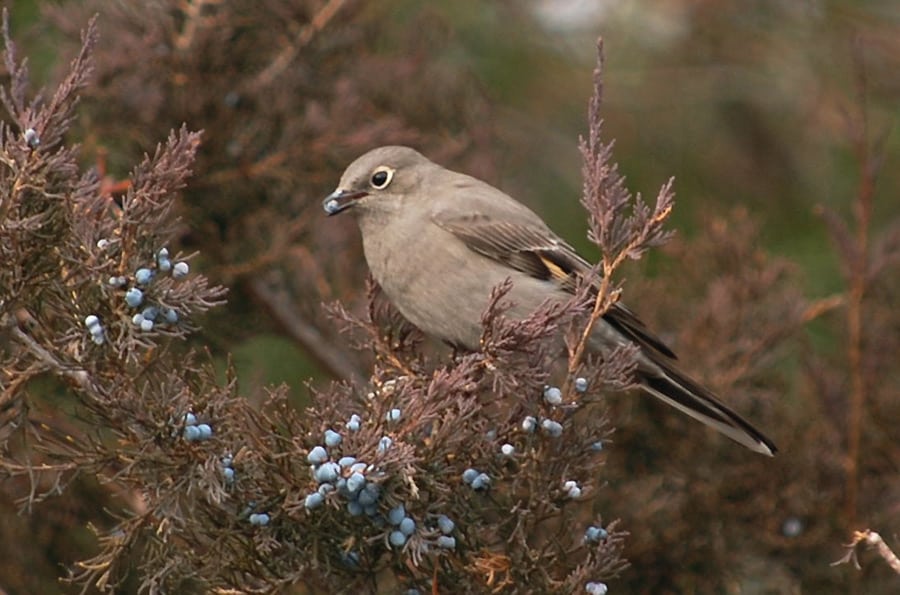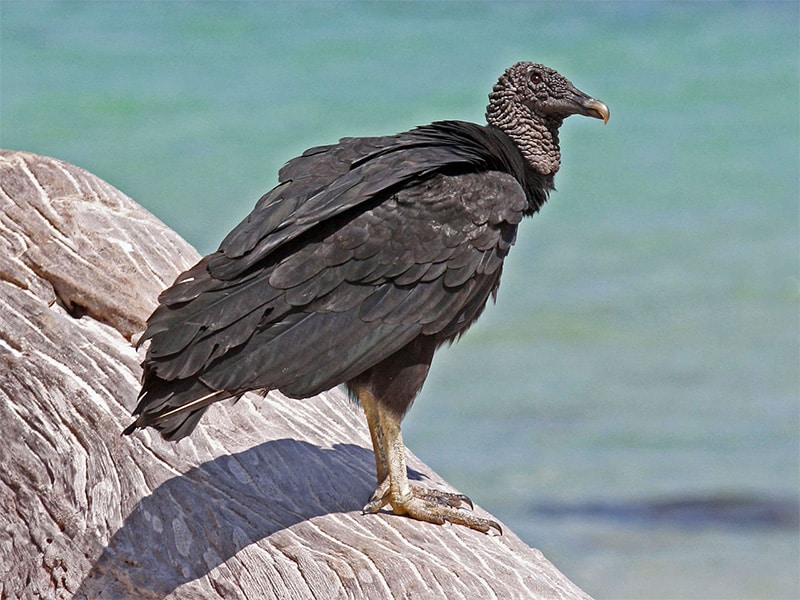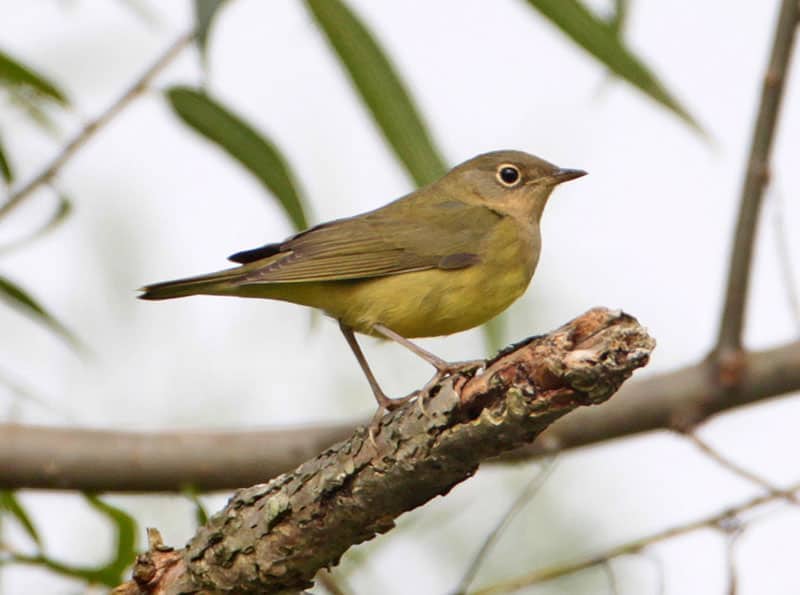Look for
The Townsend’s solitaire is a relatively small thrush. Its plumage is cool gray overall, with slightly lighter underparts. It has a long tail with white streaks on the outer edges. Its wings have black flight feathers and an intricate, yellowish-brown pattern. It has a crisp, thin eye-ring, a short bill, and black legs. It resembles a mockingbird in shape and color, but is smaller.
Listen for
The Townsend’s solitaire’s song is a complex, prolonged series of clear, warbled notes that sporadically rise and fall in pitch. The lengthy, robust phrases roll together continuously for about a minute before a pause. The Townsend’s solitaire has various calls, including a short, squeaky teeek and a clear, soft, whistled heeh.
Find it
Some Townsend’s solitaires breed in the western parts of Canada, including British Columbia, the Yukon Territory and small parts of Alberta, the Northwest Territory and Alaska. These birds migrate south into the western United States and northern Mexico for the winter, while others live in these warmer climates year round. The Townsend’s solitaire can be found in high altitude coniferous forests, preferring to live in spruce, pine, and fir trees. During migration, some descend from the mountains to more open woodland areas, preferring to inhabit juniper trees.
Diet
During the breeding season, the Townsend’s solitaire feeds primarily on insects, including beetles, ants, moths, and spiders. During the winter, its diet becomes much more reliant on fruit, including, juniper berries, hackberry, currant, holly, and others. It forages by waiting patiently from a perch on a tree branch and flying out to catch insects in midair or by swooping down and picking them off the ground. They also may hover to grab berries from limbs, or pick fallen berries off the ground.
Nesting Behavior
The Townsend’s solitaire builds its nest on the ground in a shallow depression in a dirt bank, preferring a location with some form of overhang for coverage and shelter. Occasionally, it uses a decaying stump or live tree. Nest locations include natural crevices, nooks, or hollows among riverbanks, slopes, or cliff sides.
The female alone builds the nest by constructing a bulky, open cup of twigs, bark, and pine needles and lines it with finer plant materials, such as grass. She lays three to five eggs that are a light blue or bluish-gray with brown spotting. The female alone incubates the eggs, which hatch in 11 to 12 days. Both parents feed and care for the young before they leave the nest after around 14 days.




